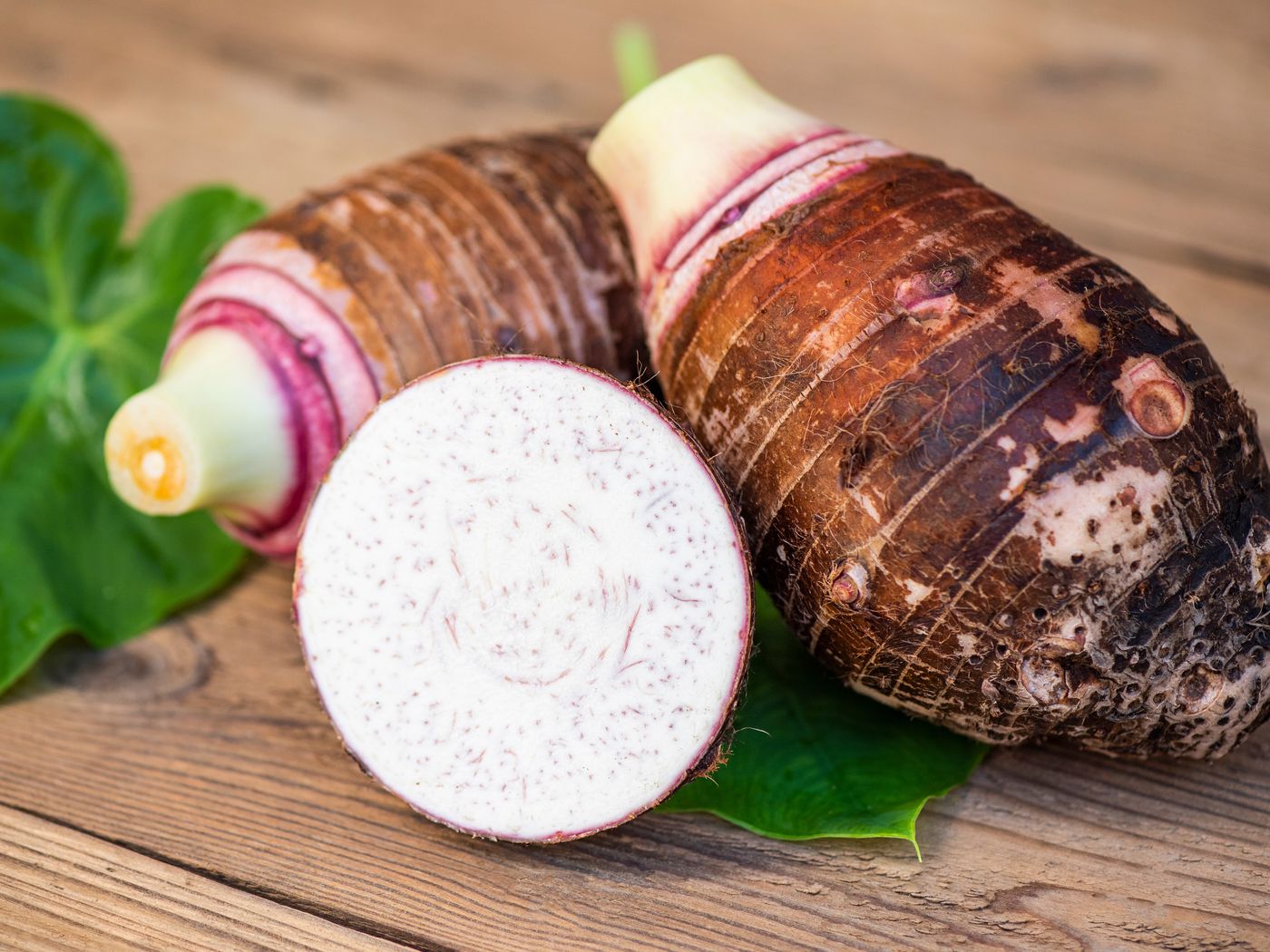
Taro is a root vegetable that has been a staple in many cultures for centuries. But what makes this starchy tuber so special? Taro is not just any root; it’s packed with nutrients, versatile in cooking, and holds cultural significance in various parts of the world. From its origins in Southeast Asia to its role in Hawaiian cuisine, taro has a rich history and numerous health benefits. Whether you’re a foodie looking to expand your palate or someone interested in global culinary traditions, learning about taro can be both fun and enlightening. Ready to dig in? Here are 25 fascinating facts about this incredible root vegetable.
Key Takeaways:
- Taro, a versatile tropical plant, has been cultivated for over 10,000 years and is packed with nutrients like fiber, vitamins, and antioxidants. It's a staple in many traditional and modern dishes worldwide.
- Taro holds cultural significance in Hawaii, Japan, Fiji, Nigeria, and India, and has made its way into modern cuisine with popular items like bubble tea, ice cream, and fries. It requires specific growing conditions and takes about 200 days to mature.
What is Taro?
Taro is a tropical plant known for its edible corms and leaves. It's a staple in many cultures, especially in Asia, Africa, and the Pacific Islands. Let's dive into some fascinating facts about this versatile plant.
-
Taro is one of the oldest cultivated crops, with evidence of its cultivation dating back over 10,000 years.
-
The plant is known scientifically as Colocasia esculenta.
-
Taro corms are rich in carbohydrates, making them an excellent energy source.
-
The leaves of the taro plant are also edible but must be cooked to remove toxins.
-
Taro is often used in traditional dishes like poi in Hawaii, taro cakes in China, and taro chips in various cuisines.
Nutritional Benefits of Taro
Taro isn't just versatile in cooking; it's also packed with nutrients. Here are some health benefits you might not know about.
-
Taro is high in dietary fiber, which aids in digestion and helps maintain a healthy gut.
-
It contains significant amounts of vitamins A, C, and E, which are essential for immune function and skin health.
-
The corms are a good source of potassium, which helps regulate blood pressure.
-
Taro is low in fat and cholesterol, making it a heart-healthy food choice.
-
The plant also contains antioxidants that help fight free radicals in the body.
Cultural Significance of Taro
Taro holds a special place in many cultures around the world. Its cultural importance is as rich as its nutritional profile.
-
In Hawaii, taro is considered sacred and is used to make poi, a traditional dish.
-
In Japan, taro is often used in New Year's dishes as a symbol of good fortune.
-
In Fiji, taro is a staple food and is often served at ceremonial feasts.
-
In Nigeria, taro is known as "cocoyam" and is used in various traditional dishes.
-
In India, taro leaves are used to make a popular dish called "patra."
Taro in Modern Cuisine
Taro has found its way into modern kitchens, offering a unique flavor and texture to contemporary dishes.
-
Taro bubble tea, a popular drink, features taro root as a key ingredient.
-
Taro ice cream is a favorite dessert in many Asian countries.
-
Taro fries are a healthier alternative to regular potato fries.
-
Taro puree is often used as a thickener in soups and stews.
-
Taro flour is gluten-free and can be used in baking.
Growing and Harvesting Taro
Growing taro requires specific conditions, but it's worth the effort for the delicious rewards.
-
Taro thrives in warm, humid climates with plenty of rainfall.
-
The plant can be grown in both wet and dry conditions, although wet conditions are preferred.
-
Taro takes about 200 days to mature from planting to harvest.
-
The corms are usually harvested by hand to avoid damaging them.
-
After harvesting, taro corms should be stored in a cool, dry place to extend their shelf life.
Taro's Fascinating World
Taro isn't just another root vegetable. It's packed with nutrients, has a rich history, and plays a vital role in many cultures. From its origin in Southeast Asia to its global spread, taro has been a staple in diets for centuries. Its versatility in cooking, from savory dishes to sweet desserts, makes it a favorite among chefs and home cooks alike.
Beyond the kitchen, taro's health benefits are impressive. It's a great source of fiber, vitamins, and minerals, helping with digestion and overall health. Plus, its unique texture and flavor add a special touch to any meal.
Whether you're a food enthusiast or just curious about different ingredients, taro offers a world of exploration. Next time you're at the market, grab some taro and experiment. You might just find a new favorite dish!
Frequently Asked Questions
Was this page helpful?
Our commitment to delivering trustworthy and engaging content is at the heart of what we do. Each fact on our site is contributed by real users like you, bringing a wealth of diverse insights and information. To ensure the highest standards of accuracy and reliability, our dedicated editors meticulously review each submission. This process guarantees that the facts we share are not only fascinating but also credible. Trust in our commitment to quality and authenticity as you explore and learn with us.


